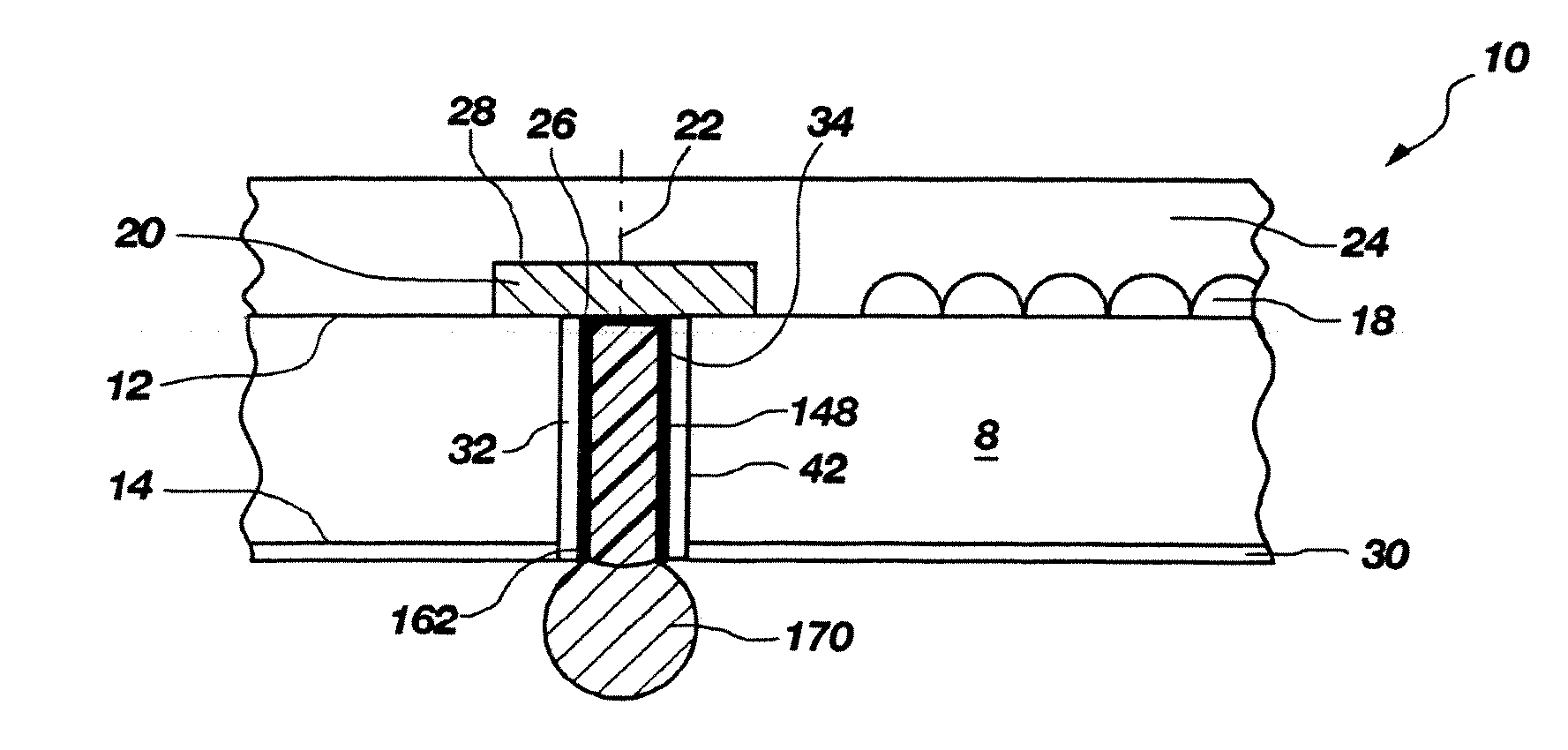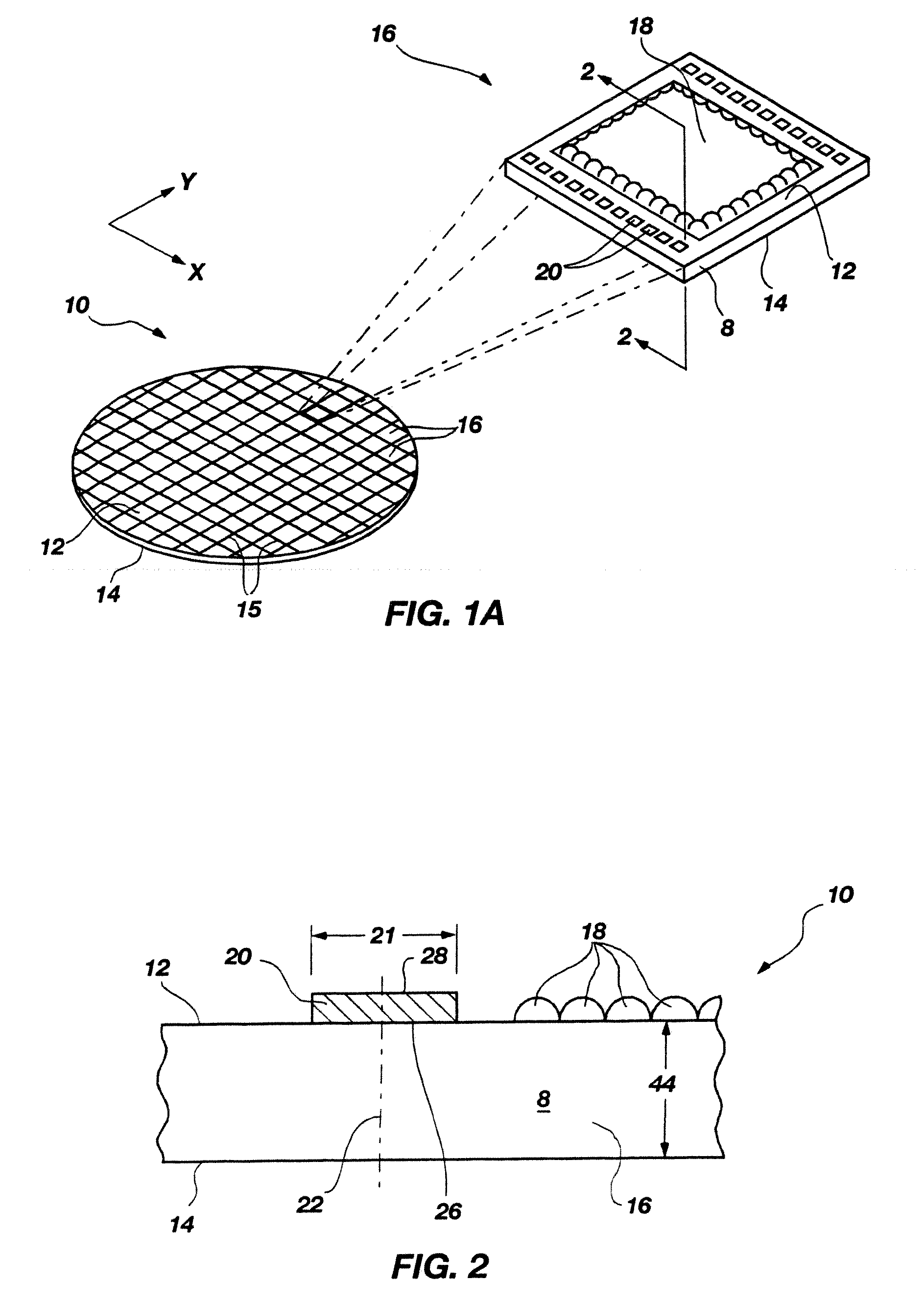Methods of forming blind wafer interconnects, and related structures and assemblies
a technology of blind wafers and interconnects, applied in the direction of semiconductor devices, semiconductor/solid-state device details, electrical apparatus, etc., can solve the problems of increasing the propensity for wire damage, and affecting the production of miniature semiconductor devices. , to achieve the effect of reducing processing time and expens
- Summary
- Abstract
- Description
- Claims
- Application Information
AI Technical Summary
Benefits of technology
Problems solved by technology
Method used
Image
Examples
Embodiment Construction
[0056] The invention comprises methods for forming blind vias (“BVs”) also known as blind wafer interconnects (“BWIs”), which penetrate into a second surface of a semiconductor substrate structure, typically to contact bond pads or other conductors on the first surface. Referring to FIG. 1A, the first surface may be an active surface 12 of a wafer 10 or other bulk semiconductor substrate and the second surface is a wafer back side surface 14. The term “via” is a general term denoting a conductor passing into or through a semiconductor substrate structure substantially transverse to a major plane of the substrate. The term “blind wafer interconnect” is often used more specifically where the substrate structure is a wafer (see FIG. 1A) or other bulk substrate of semiconductor material. In this application, the terms will be used interchangeably as applying to any substrate material comprising a layer of semiconductor material and which may be subjected to a thinning process for reduci...
PUM
 Login to View More
Login to View More Abstract
Description
Claims
Application Information
 Login to View More
Login to View More - Generate Ideas
- Intellectual Property
- Life Sciences
- Materials
- Tech Scout
- Unparalleled Data Quality
- Higher Quality Content
- 60% Fewer Hallucinations
Browse by: Latest US Patents, China's latest patents, Technical Efficacy Thesaurus, Application Domain, Technology Topic, Popular Technical Reports.
© 2025 PatSnap. All rights reserved.Legal|Privacy policy|Modern Slavery Act Transparency Statement|Sitemap|About US| Contact US: help@patsnap.com



